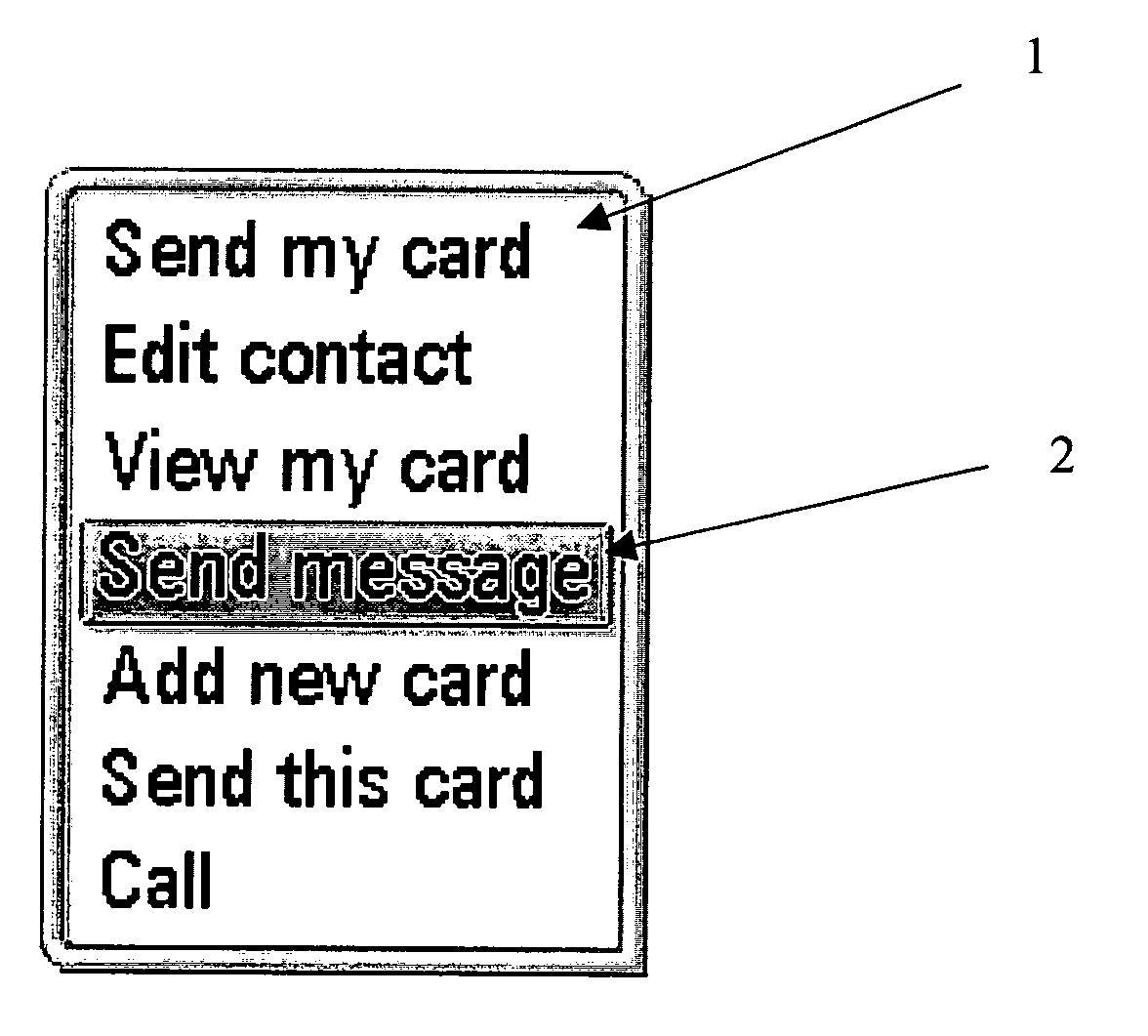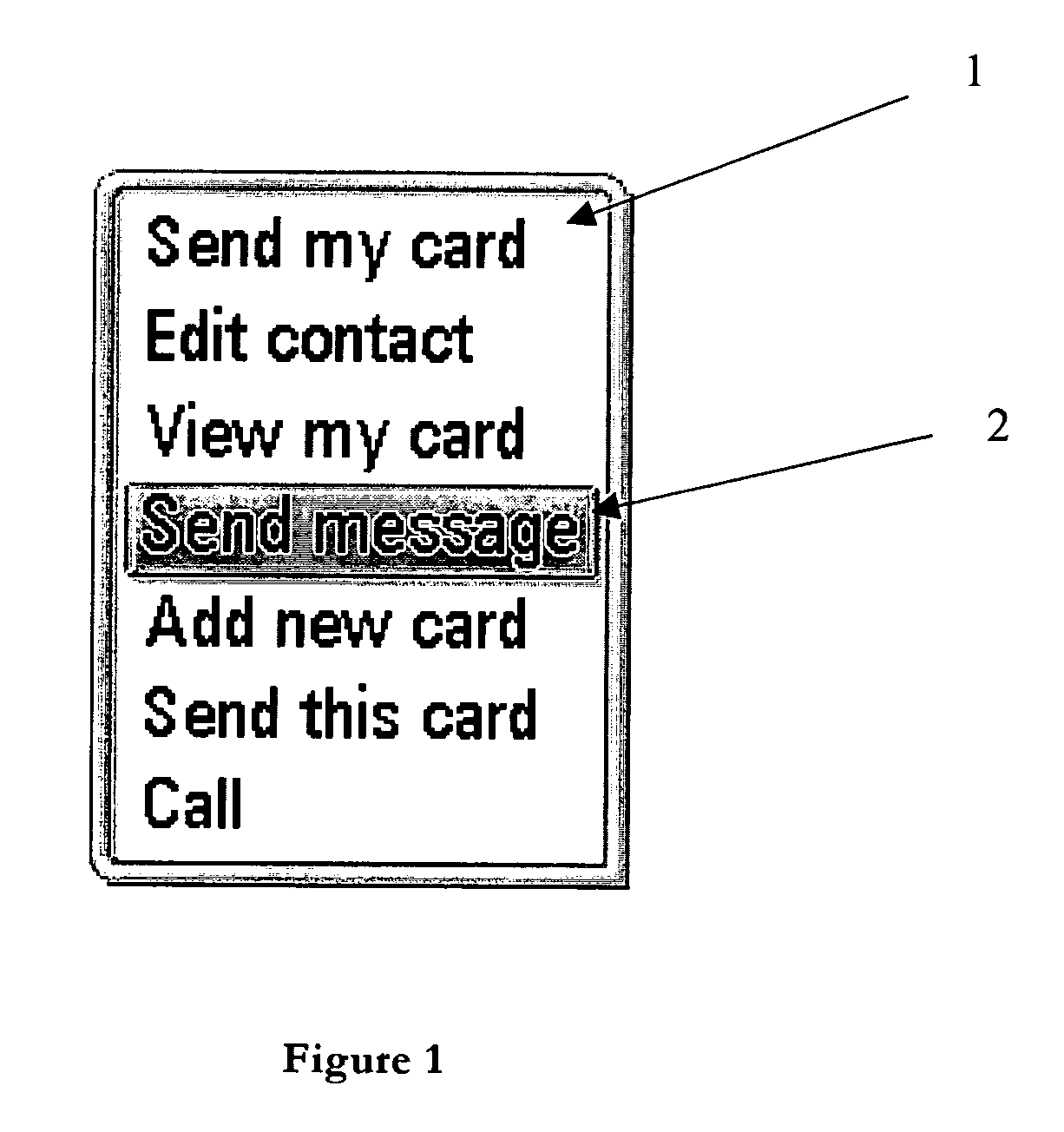Computing device with improved user interface for menus
a computing device and menu technology, applied in computing, instruments, telephone set constructions, etc., can solve the problems of inability to quickly scroll, many items in the menu are relatively inaccessible, and users cannot see all items, etc., to achieve easy and rapid scrolling, easy and rapid selection, and small precision in using scrolling controls
- Summary
- Abstract
- Description
- Claims
- Application Information
AI Technical Summary
Benefits of technology
Problems solved by technology
Method used
Image
Examples
Embodiment Construction
[0028] For an application menu with six options, the menu would conventionally be drawn with the most often selected at the top and other menu options in order beneath it to the least often selected at the bottom, with the default (highlighted) option being the topmost one. This allows the option that the user selects most often to be entered with the minimum interaction. Hence, in FIG. 2, a simplified plan view of a mobile computing device is shown; the device has a screen displaying six options, or items, in a single list relating to card functionality (a card contains a user's personal details, such as name, e-mail, telephone etc. It can be beamed from typical mobile computing device to device using a standard IrD protocol). The order of items is conventionally defined by the device manufacturer or software vendor; in this case, the most prominent item is `View my card`, which a highlight appears over as a default.
[0029] However, imagine that a user is at a conference and wishes ...
PUM
 Login to View More
Login to View More Abstract
Description
Claims
Application Information
 Login to View More
Login to View More - R&D
- Intellectual Property
- Life Sciences
- Materials
- Tech Scout
- Unparalleled Data Quality
- Higher Quality Content
- 60% Fewer Hallucinations
Browse by: Latest US Patents, China's latest patents, Technical Efficacy Thesaurus, Application Domain, Technology Topic, Popular Technical Reports.
© 2025 PatSnap. All rights reserved.Legal|Privacy policy|Modern Slavery Act Transparency Statement|Sitemap|About US| Contact US: help@patsnap.com



